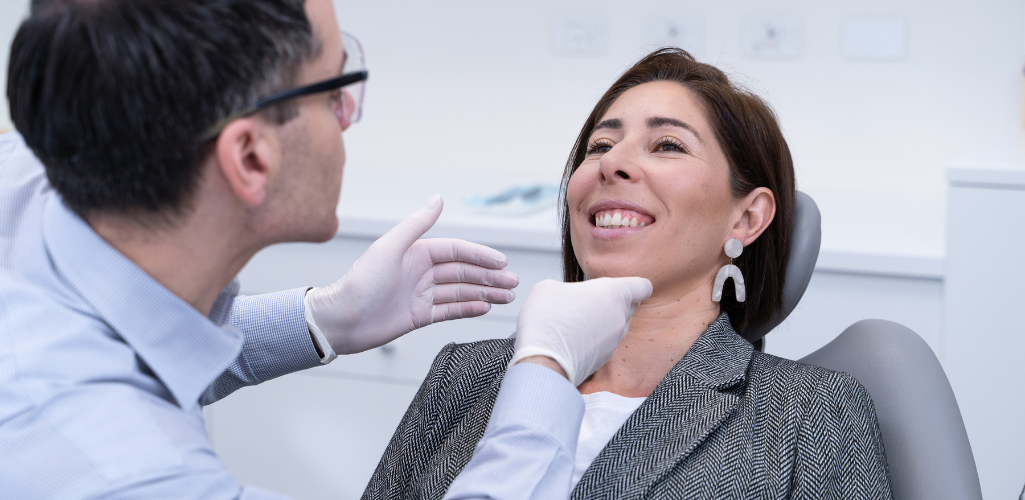
An orthodontist diagnoses and treats dental and facial irregularities to correct bite issues and crooked and misaligned teeth. Dr De Angelis is a specialist orthodontist who can help people of all ages and varying situations.
Just like a General Practitioner and an Oncologist, specialisation differentiates an orthodontist from a dentist. The good news is that you don’t need a referral to see an orthodontist.
There’s a high chance that you wouldn’t know if you need to see an orthodontist. If you have any of these 8 reasons, it’s time to schedule your initial consultation with an orthodontist.
Plaque build-up, tooth decay and gum disease
More often than not, problems like plaque build-up, tooth injuries such as chipping, and tooth decay arise because of crooked teeth. Tooth decay is evident if the teeth are very close together. Gum disease may be linked to how the jaws are aligned.
In addition to being physically bothersome, crooked teeth can also lead to lower self-esteem and other health problems. An orthodontist will study your teeth and jaw in detail to diagnose the exact cause of your problem.
Overlapping or misaligned teeth
The development of too many teeth in one space is called overcrowding or malocclusion. This makes it harder to clean the teeth and may result in long-term dental problems.
You might not find your smile attractive when your teeth are misaligned or overlapping. Your smile is the first thing people notice about you. Orthodontic treatment can help you improve your appearance and even your life.
An orthodontist can address this issue in several ways, such as by creating more room for teeth by using clear aligners or putting on braces. Make sure you ask the right questions before starting your orthodontic treatment.
Gaps between teeth
A gap or space between teeth, called a diastema, can cause decay and other dental problems. It can also make you conscious of your smile. While orthodontic treatment is more than just aesthetics, it can help you achieve the smile you’ll be proud of.
Orthodontic treatments have come a long way. If metal braces are not your style, contemporary treatments like clear aligners have got you covered. They are designed to be comfortable and to invisibly fit into your lifestyle.
Bad bite
A bad bite is when your upper and lower teeth do not combine together properly inside your mouth. There are four bite issues: overbite, underbite, open bite, and crossbite.
A bad bite affects the shape of the face and can lead to other issues like jaw pain, grinding, headaches and even speech problems and health problems. It may occur due to habits like bottle feeding, thumb sucking, genetics or an injury.
Issues with bites can also affect your facial appearance and lower your self-esteem. We believe that early treatment lays the proper foundation for adulthood.
Teeth grinding
Bruxism is when you involuntarily grind, clench or gnash your teeth involuntarily. It usually occurs while you’re sleeping. Tooth grinding is exacerbated by irregularities in how your teeth and jaw fit together.
If left untreated, teeth grinding can lead to more severe issues like sensitive teeth, tooth mobility, fractures and chipped enamel. So if you wake up with a sore jaw, you should see your orthodontist immediately.
Sleeping problems
You might have a severe condition if your breathing stops and starts while sleeping. This condition of uninterrupted breathing is called sleep apnoea. It may be linked to how your teeth and jaws are aligned.
Especially for children, severe snoring can be a sign of sleep apnea. Other orthodontic problems like a smaller lower jaw can lead to smaller airway size, which might be a factor for sleep apnoea.
Often, an orthodontist is the first person to identify sleep apnoea and can devise treatment options. They are equipped with education in facial development to expand the upper jaw or eliminate habits to reduce the risk of sleep apnoea.
Speech issues
Not all speech problems can be improved by orthodontic treatment, but certain malocclusions can play a considerable role in speech disorders. Clear speech involves the tongue touching the teeth in a certain way to make sounds.
Teeth also control the airflow, which is crucial to pronounce consonants accurately. Orthodontic treatment can address speech problems like lisping or whistling, difficulty articulating consonants and slurring.
Missing permanent teeth
Spaces left by missing teeth can lead to dental, speech, eating and chewing problems as well as feeling self-conscious due to the cosmetic effects of missing teeth. In addition, bone loss can also occur around a missing tooth, and surrounding teeth may also move affecting the bite and symmetry of your teeth/smile.
Missing teeth may be first noticed when your child’s baby teeth fall out. If one (or more) of their adult teeth have not erupted, this is definitely a time to visit an orthodontist, who will take an X-ray to see whether they are actually missing (a condition called agensis) or just stuck underneath the gums (a condition called ankylosis). Missing teeth may also be a result of trauma or decay.
All of these issues can be treated with varying orthodontics and replacement tooth treatments.
Orthodontic treatment is about more than just transforming smiles. At Transform Orthodontic Care, we strive to achieve harmony between teeth, joints and muscles.
Starting orthodontic treatments can be nerve-wracking. Here’s what to expect at your first orthodontic appointment.



